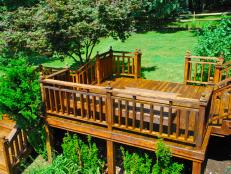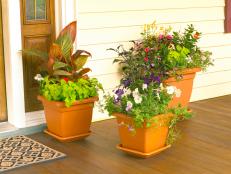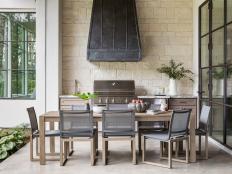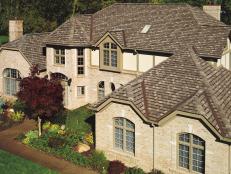Feng Shui for the Garden


Too many good gardeners feel unfulfilled in their landscapes, for one simple reason: A lack of good feng shui.
Feng shui (pronounced “fung-shway”) is not a nasty word, or a religion, or anything of the sort; it is simply the ancient art of good placement, indoors and out. It is the practice of situating objects so they are comfortable, relaxing and soothing. And what’s objectionable about feeling good?
Anxious to bring feng shui into your unruly garden? Follow some key principles to bring harmony to your green space.
Simple Concepts
This ancient design concept isn’t really very complicated; it’s simply a few easy principles used to create pleasing, harmonious arrangements. If you can assume that there are universal energies flowing around us at all times, feng shui (which means the flow of “wind” and “water”) tries to attract or maximize those which are good, and minimize those which are bad.
Feng shui works with, not against, nature, and takes into consideration many different elements.
It encourages the use and balance of the five natural elements or forces: Wood, fire, earth, metal and water. Examples of each element include live plants, an outdoor fireplace or chiminea (or a grouping of red- and yellow-colored plants), terra cotta or clay pots, large stones, a water feature of any type, and metal sculptures or wind chimes. Try to balance the size and placement of these elements so that none is more dominant than the others.
Also, you can easily redesign or modify unnatural or “unhappy” elements of design, such as excessive straight lines, sharp angles, narrow walks and steps, poor lighting, clutter, violently clashing colors, competing sounds, bad weather exposure, poor plant choices, and so on, to improve the overall feel of our garden.
Case Study
Before: House is at top, street at bottom, driveway on right. This initial plan offers boring straight lines, no real plant diversity and no place to relax.
When I moved into my cottage, the landscape was all straight lines, from the curb, driveway and sidewalk, to the house, porch and foundation plantings. It was awful, and high maintenance. And uncomfortable. I redesigned everything, starting by making the garden face me and my house rather than the street, so it welcomes me when I walk out my door and I can face the world with my back to a mountain (the house).
After: The garden is reversed so it faces the house not the street. Curved walks, lots of sitting areas, plant variety and a water feature facing the front deck maximize feng shui.
I made the walk and the sides of my driveway curvy, added several round decks (round lawn would have worked as well), and installed a water feature with a splashy waterfall that faces the main deck, and a round fire bowl for cool evenings. Night lighting now makes getting to and fro a lot easier and banishes dark spots. A generous variety of plants, including evergreens of different sizes and shapes, flowering plants and interesting container collections are all selected for year-round pleasure with low-maintenance in mind.
Garden accessories, art, and the wind chime are all calm and evocative, as is the constant companionship of all sorts of gentle wildlife. Bad views are hidden with carefully-placed plants and fence sections without blocking good views and cool summer breezes.
This is all in my front yard, and I am the only person on the street who entertains comfortably out front. Nothing jars my peace of mind, and the waterfall drowns out the constant hum of city living.
Easy Ideas
While feng shui experts strongly dislike “recipes” for bringing calm into the garden, here are a few easy – and universal - concepts you can work into your garden:
- Create a roomy space for people to gather and relax – a deck, patio, or a small lawn area, and remove clutter to give a positive feeling for the entire garden space. Place garden furniture where you can have your back to a wall or hedge, with an unobstructed view of the garden; have small tables, plants (including ones in pots), or even large boulders to one side like arms on an armchair. Add a footstool for putting up your feet. In other words, make your guests and yourself comfortable and make everyone feel safe and secure – just as comfortable as if you were in your own indoor living room or den.
- Redesign straight walks and edges into gentle curves, or place a plant, urn, sculpture, loose-leafed plant or other impediment to break up their non-stop look and feel. Tone down or round off corners, and place small plants, stones or other objects along long edges. Break up solid fences or hedges with an irregular plant or object. When selecting garden art, if possible choose rounded art forms over pointed ones.
- Replace high-maintenance plants with those that please you and don't have a lot of demands. Plant them where they will grow best – plants that grow in good light and good soil give off positive feelings. Arrange them so they are mixed in different sizes, shapes and colors, so no one will be overwhelmed by the others. Use ornamental grasses to capture and bring to life passing breezes.
- Use subdued colors that blend together rather than clash loudly, and brighten dark areas and dispel gloom, especially in corners, by adding lights, light-colored plants, or—in extreme dark situations—even a silvery gazing globe or mirror.
- Both water and fire bring excellent feng shui. For focus and a feeling of contentment, consider putting one or the other up close in the near center of your garden, just like camping beside a lake with a nice fire going. While the clear surface of a small pond can reflect the sky, a waterfall adds soothing background sounds; you can bring a feeling of good energy coming into your space by placing the waterfall so water flows towards you, not away. And by the way, don’t go overboard with competing sounds; it only takes one gentle wind chime to soothe the mind and spirit.
- Make wildlife comfortable in your garden, especially butterflies, gentle bees and dragonflies (which you will have, if you have a decent water feature).
Again, these are suggestions, not rules; just think about them, and you will realize that while it isn’t critical to include them all, a good garden will usually end up having them anyway. Think about gradually replacing those things (plants as well as design features) that bother or burden you with those that help you feel more comfortable and relaxed. As the ancient Chinese philosopher and sage Lao Tzu put it, “Meandering leads to perfection.” Take your time with this. That would be good feng shui, too.












































